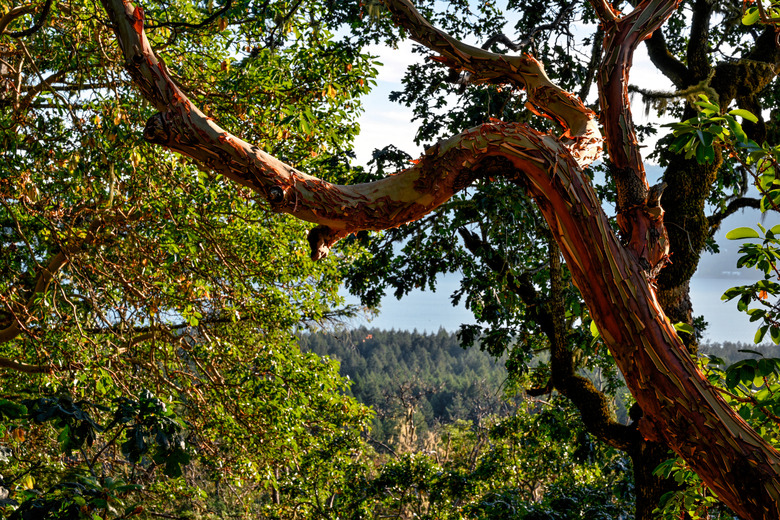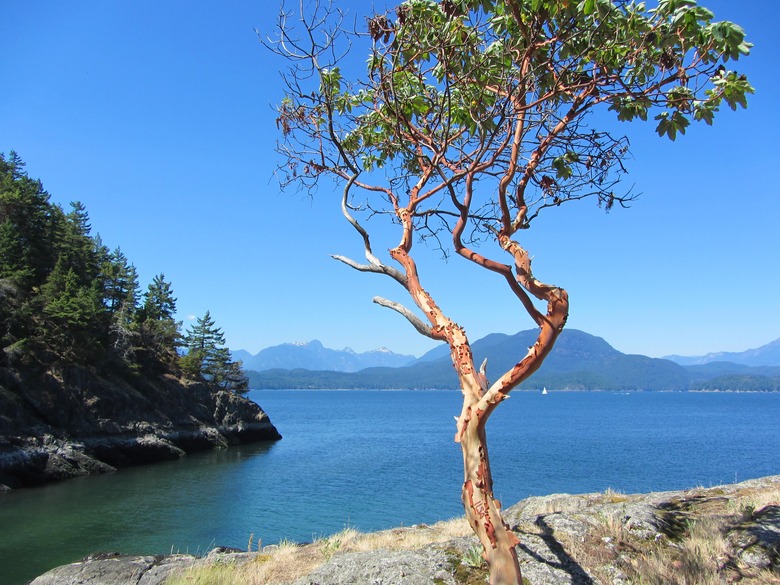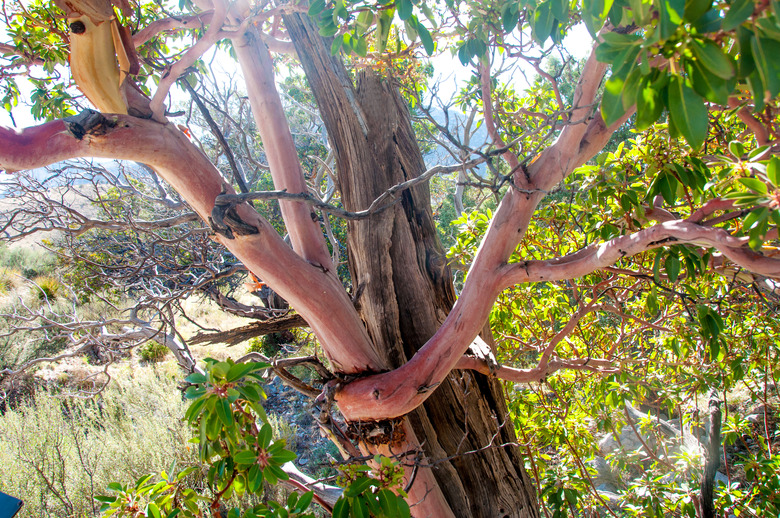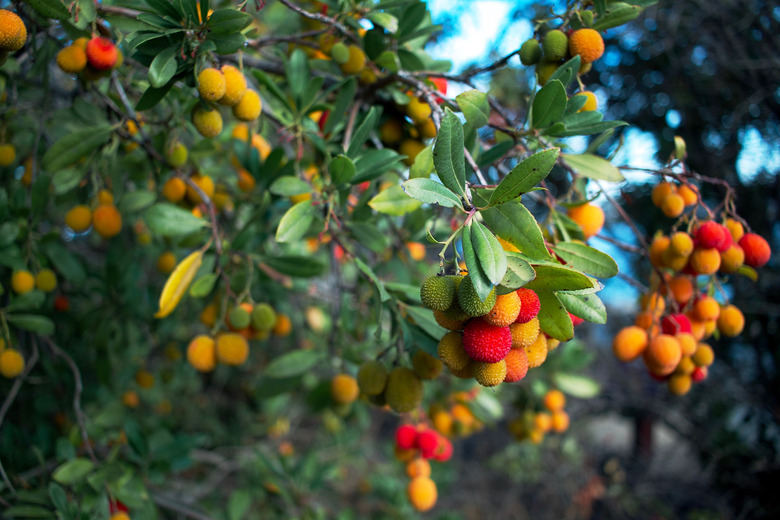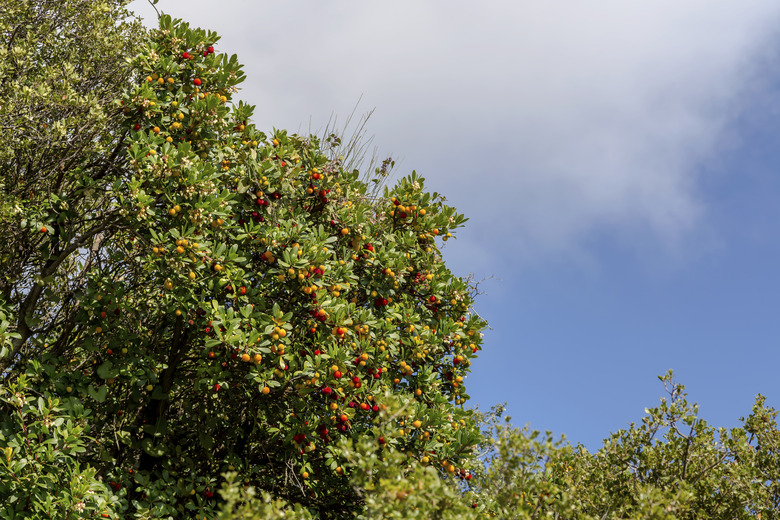Facts About The Madrone Tree
Sometimes called strawberry trees, madrone trees (Arbutus spp.) all share traits in common, such as broadleaf evergreen leaves and showy red berries, but what makes these trees instantly recognizable as madrone trees is their attractive, peeling bark, which is highly textured and reddish brown in color.
Roughly 12 species belong to the genus Arbutus but only a handful share the common name madrone. Although they share many traits, each madrone tree species has its own unique characteristics, origin and significance to local people and wildlife. Among the most widely known are the Pacific madrone, the Texas madrone and the tree called simply "strawberry tree."
Pacific Madrone Trees
Pacific madrone trees (Arbutus menziesii) are native to the mountains of the Pacific Coast of North America, from British Columbia to Oregon and down into central and northern California. Sometimes called madronas or madroños, these showy trees grow best in USDA hardiness zones 5a to 8b, where they can reach a mature height of 30 to 65 feet.
Pacific madrones are evergreen trees that grow mainly in foggy mountain habitats of the west coast on steep, rocky slopes. As a result, they must be planted in very well-draining soil in home gardens, because they are susceptible to root rot and cankers when grown in soggy soil.
Pacific madrone trees share their habitat with iconic species such as the coast redwood (Sequoia sempervirens, USDA zones 7 to 9), California black oak (Quercus kelloggii, USDA zones 7 to 9) and the Douglas fir (Pseudotsuga menziesii, USDA zones 4 to 6). Their dainty blossoms feed hummingbirds, and they provide food and shelter for important bird species such as band-tailed pigeons and woodpeckers.
One fascinating fact about Pacific madrone trees is that they produce a structure called a "burl," which is a regenerative organ located underground at the roots. It contains a high concentration of cells that respond to and repair any damage to the tree—including wildfire damage.
Texas Madrone Trees
Texas madrone trees (Arbutus xalapensis) are small native trees with an attractive, urn-shaped growth habit and leathery leaves. They grow best in well-draining soil within USDA hardiness zones 7 and 8, which is the same hardiness range as their native habitat of Texas and New Mexico. This species can reach 50 feet in height at maturity but is often much smaller with a spreading growth habit.
Texas madrone trees need full sun with some very light midday shade, if they are grown in poor soil. Their native landscape is quite harsh, so these drought-tolerant trees help their seedlings through the propagation process by sheltering the new sprouts as they become established. Called "nurse trees," mature Texas madrones shelter the surrounding soil and help it retain moisture as the seedlings grow.
Texas madrone berries were used by Native Americans as a food source.
Strawberry Trees
Strawberry trees (Arbutus unedo) are small trees that occur naturally on the woodlands and bluffs of the Mediterranean and the British Islands. They grow best in USDA zones 7 to 10, where they reach a mature height of 10 to 15 feet with a 10- to 15-foot spread.
Strawberry trees have a vase-shaped growth habit with multiple trunks, but they can trained to have a single trunk, if the pruning process starts while they are still young.
Strawberry trees earned their common name from their reddish berries, which have a distinctly strawberry-like appearance. The berries are also edible but, unfortunately, strawberry tree berries are very bland and do not share the same fragrant, sugary flesh as true strawberries.
Although the fruit of the strawberry tree is not tasty when eaten out of hand, it is used extensively in the brandy production trade within Portugal.
The species name unedo comes from the words of Pliny the Elder who allegedly said of the strawberry tree fruit, "unum tantum edo," which translates to "I eat only one".
Growing Madrone Trees
Madrone trees of all varieties are easy to grow, if they are planted and grown under the right conditions. The right care is also important, but it cannot correct poor growing conditions.
Planting Madrone Trees
- Growing madrone trees in full sun is best, but they need some light midday shade in hot areas. Heavy shade will produce leggy, weak growth and fewer flowers and should be avoided.
- Choose a growing location with well-draining soil high in organic matter. Avoid heavy clay or sandy soil, which are both challenging.
- Plant madrone trees where they will receive shelter from strong winds, but do not plant them too close to structures, underground utilities or large trees, because they have a penetrating root system.
Tip
Plant madrone trees so that their burl is below the soil surface—shallow planting can damage the burl.
Caring for Madrone Trees
Madrone trees need regular care, particularly when young. Neglect can result in weak trees with poor blooming and fruit production.
- Provide 1 inch of water weekly during the first few summers in the garden. All madrone varieties are moderately drought tolerant once established, but they need regular watering when young, particularly when planted in the porous, well-draining soil that they prefer.
- Spread a 3- to 5-inch-thick layer of mulch around the base of the tree under the drip line. Leave a 3- to 4-inch gap between the mulch layer and the base of the trunk to avoid Phytophthora and other types of rot.
- Madrone trees do not need fertilizer, but they do need pruning to create a strong shape and to remove any dead, damaged growth. Prune in spring immediately after flowering.
Tip
Water madrone trees only when the soil feels dry below the surface.
